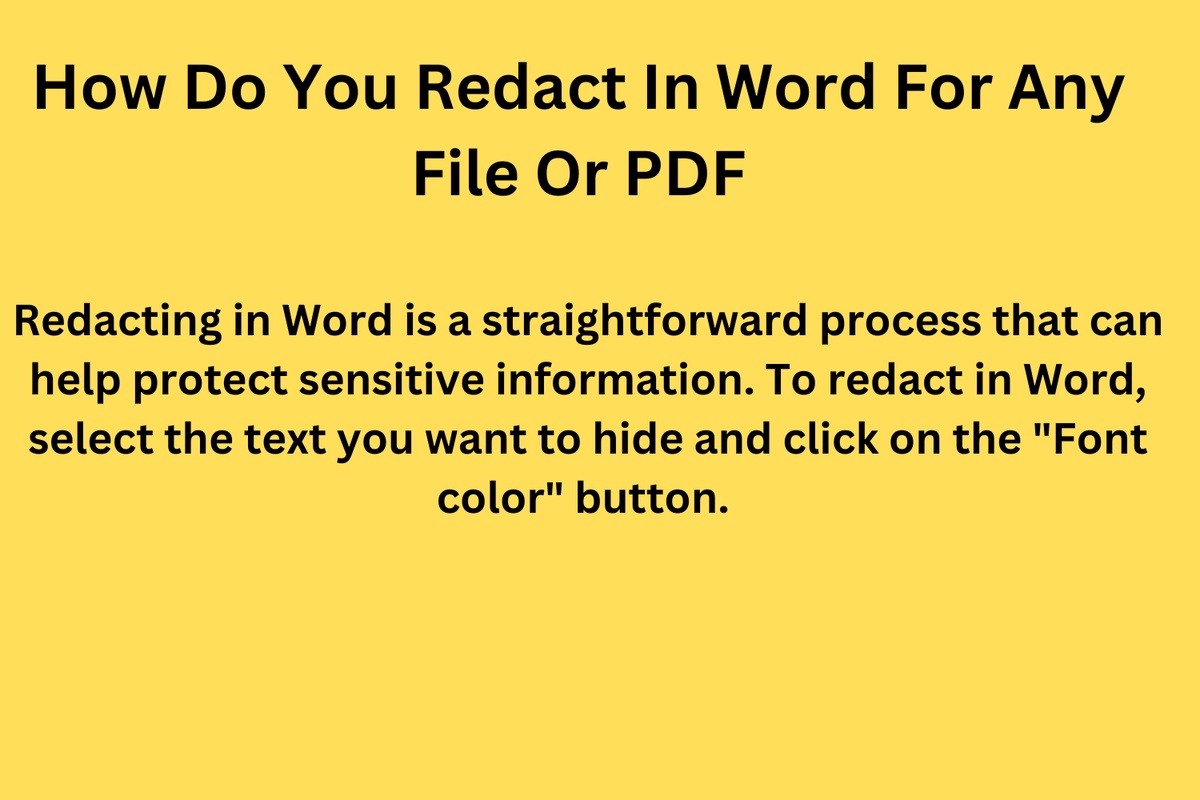How to redact in Word | Redactable
Are you tired of manually blacking out sensitive information on physical documents? Worry no more because redacting in Word is here to save the day! Redaction is the process of permanently removing or hiding confidential details from a document. With Word's powerful tools, redacting has never been easier and faster. In this blog post, we will guide you through the simple steps of how to redact in Word, including some helpful tips and tricks along the way. So let's get started!
What is redacting?
Redacting is a process of removing or hiding sensitive information from a document. This process helps to protect confidential data and maintain privacy. Redaction can be done on any type of text, whether it's an email, PDF file, Word document or even a webpage.
The main goal of redacting is to ensure that only authorized people have access to the necessary information while keeping everyone else in the dark about what was redacted. This way, companies can avoid legal liability issues related to the accidental disclosure of sensitive data.
It's important to note that simply deleting text from a document isn't enough for effective redaction as deleted content can still be recovered. Instead, you should use specialized software tools like those available in Word that permanently remove hidden content without leaving any trace behind.
Redaction comes with many benefits including protecting trade secrets and personal identifiable information (PII), complying with regulatory requirements, and ensuring confidentiality during investigations or litigation procedures.
Why redact?
Redacting refers to the process of removing sensitive or confidential information from a document. This can include personal identifying information, financial data, classified government material, and more.
The reasons for redaction can vary depending on the context of the document at hand. For example, businesses may need to redact financial information in order to protect their trade secrets and prevent competitors from gaining an unfair advantage. Similarly, governments may need to redact classified information in order to protect national security interests.
Redaction is not only important for protecting sensitive information but also for complying with legal requirements such as privacy laws and regulations like HIPAA (Health Insurance Portability and Accountability Act). Failure to properly redact documents can result in serious consequences including fines, legal liability, loss of trust with customers or clients, Visit here for more information.
It's essential that individuals take the necessary steps to ensure that sensitive or confidential material is protected through proper redaction techniques when sharing files electronically or physically.
How to redact in Word
Redacting is the process of editing or censoring sensitive information to protect it from being disclosed. It's a crucial step in ensuring that confidential information remains safe and secure. Fortunately, with Microsoft Word, redacting is a simple task that can be done quickly and easily.
The first step to redact in Word is to select the text you want to hide. Once you've highlighted the section, go to the "Review" tab on your menu bar and click on "Protect Document." This will give you several options for protecting your document, including restricting access or allowing only certain individuals access.
Next, choose "Restrict Editing" and then click on "Yes," Start Enforcing Protection". From there, select “Filling in forms” under “Editing restrictions”. Then click “Select Sections” below it. Choose which sections you want protected by selecting checkboxes next to each section name; when finished press ‘OK’.
To actually redact the selected text now: Click on "Insert" tab > Text Group > Select Watermark > Custom Watermark > Text watermark (then enter any word like ‘REDACTED’) - this will overlay whatever was there before without revealing anything beneath it!
With these simple steps in mind, anyone can easily learn how to redact sensitive information within a Microsoft Word document!
Tools for redacting in Word
When it comes to redacting in Word, there are several tools that can help make the process more efficient and effective. One such tool is the "Highlight" feature, which allows you to easily identify and mark sensitive information within a document.
Another useful tool for redacting in Word is the "Blackout" feature, which enables you to completely cover or block out confidential details from view. This ensures that no one can accidentally read or access the hidden information.
Additionally, Word also offers a "Remove Hidden Data" tool, which automatically detects and removes any personal or identifying data from your documents before sharing them with others. This can be especially helpful when dealing with highly sensitive or classified materials.
If you're looking for even more advanced redaction options in Word, consider using third-party add-ins or plugins designed specifically for this purpose. These tools often offer additional features like batch processing capabilities and customizable redaction settings.
By utilizing these various tools and techniques for redacting in Word, you can ensure that your documents remain secure and protected from prying eyes.
Conclusion
Redacting in Word is a simple and effective way to protect sensitive information from being seen or shared. By understanding what redaction is and why it's important, you can confidently use the tools available in Word to safeguard your documents.
With the help of built-in features like blacking out text and removing metadata, as well as third-party add-ins for more advanced needs, you can easily ensure that only those with authorized access are able to view certain parts of your document.
So next time you need to share a document containing sensitive information, remember these tips for redacting in Word. With just a few clicks, you can protect yourself and others from potentially harmful data breaches.


No comments yet